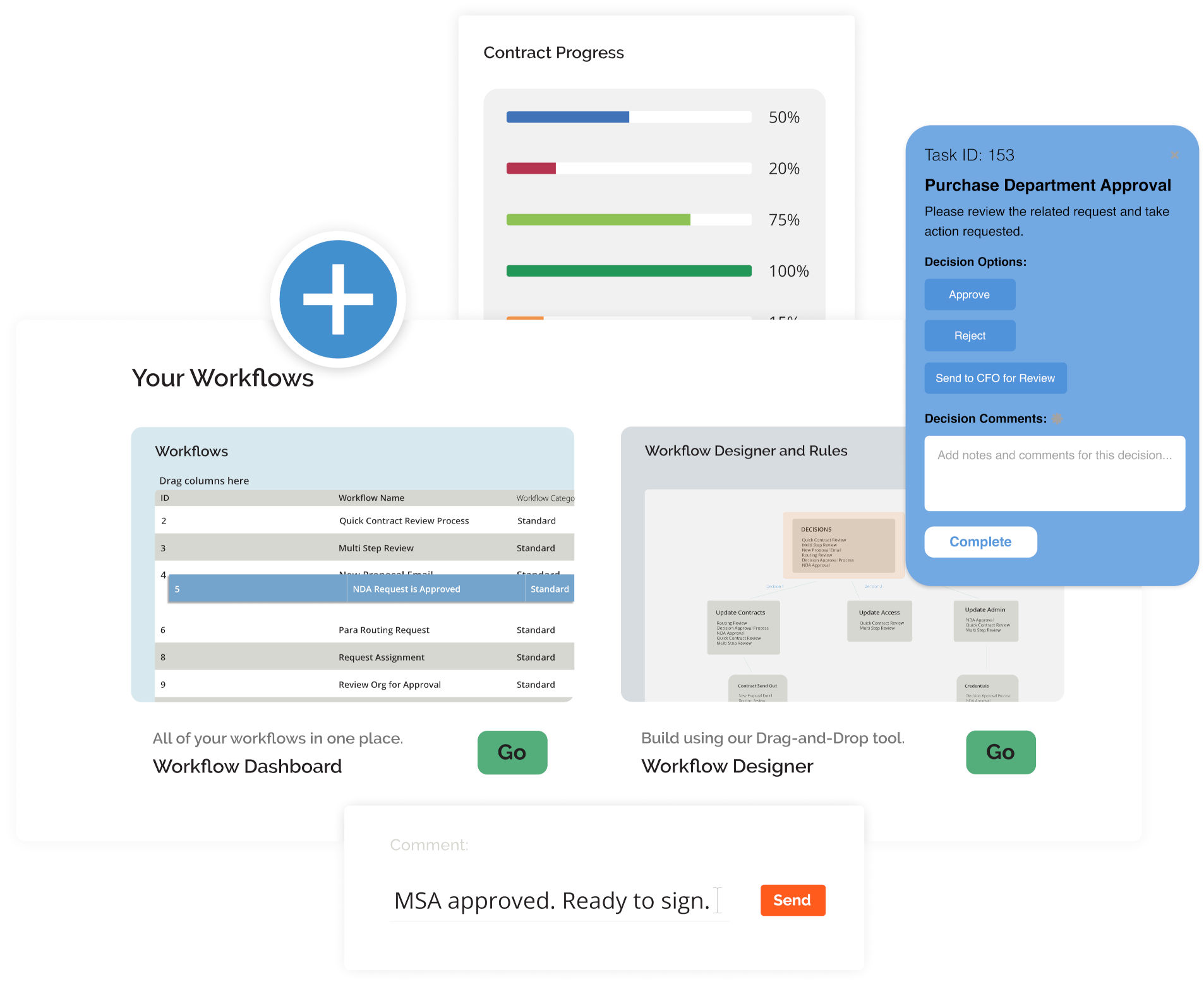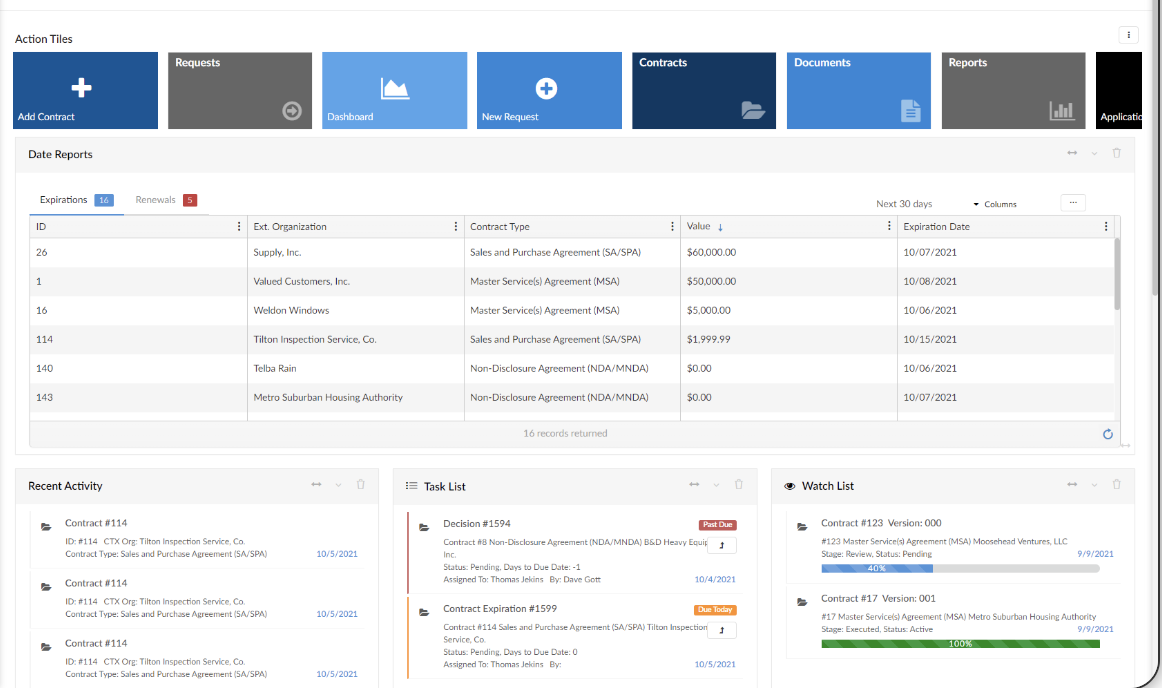Navigate CLM Success: The Do’s and Don’ts of Contract Lifecycle Management
Nov 29th, 2023
Introduction
Effective contract lifecycle management (CLM) is a critical component of successful business operations, ensuring that organizations can navigate the complex landscape of agreements with precision and foresight. The contract lifecycle, from initiation and drafting to execution, monitoring, and renewal, requires careful attention to detail and adherence to best practices. In this comprehensive guide, we’ll explore the do’s and don’ts of contract lifecycle management, empowering businesses to streamline processes, minimize risk, and maximize the value of their contractual relationships.
The Do’s of Contract Lifecycle Management
1. Implement a Centralized CLM System
 Establish a centralized contract management system that acts as a single source of truth for all contracts. This ensures easy accessibility, version control, and organized storage. Utilizing a robust CLM platform like Contract Logix provides a foundation for efficient contract management throughout the entire lifecycle.
Establish a centralized contract management system that acts as a single source of truth for all contracts. This ensures easy accessibility, version control, and organized storage. Utilizing a robust CLM platform like Contract Logix provides a foundation for efficient contract management throughout the entire lifecycle.
2. Define Clear Contract Objectives and Scope
 Clearly define the objectives and scope of each contract at the outset. Understanding the purpose and expectations of the agreement helps in drafting accurate terms and conditions, minimizing the potential for misunderstandings or disputes later in the lifecycle.
Clearly define the objectives and scope of each contract at the outset. Understanding the purpose and expectations of the agreement helps in drafting accurate terms and conditions, minimizing the potential for misunderstandings or disputes later in the lifecycle.
3. Standardize Contract Templates
 Create standardized contract templates that align with legal requirements and organizational policies. This streamlines the contract creation process, ensures consistency, and reduces the risk of errors. Standardization also facilitates a quicker negotiation and approval process.
Create standardized contract templates that align with legal requirements and organizational policies. This streamlines the contract creation process, ensures consistency, and reduces the risk of errors. Standardization also facilitates a quicker negotiation and approval process.
4. Establish a Robust Approval Workflow
 Implement a well-defined approval workflow to streamline the contract review and approval process. Clearly designate roles and responsibilities, incorporating legal, finance, and relevant stakeholders. A structured workflow reduces bottlenecks and ensures that contracts move through the approval stages efficiently. With CLM software, you can easily automate contract workflows to keep everything running smoothly and according to your business rules.
Implement a well-defined approval workflow to streamline the contract review and approval process. Clearly designate roles and responsibilities, incorporating legal, finance, and relevant stakeholders. A structured workflow reduces bottlenecks and ensures that contracts move through the approval stages efficiently. With CLM software, you can easily automate contract workflows to keep everything running smoothly and according to your business rules.

5. Incorporate E-Signature Solutions
 Embrace electronic signature solutions to expedite the execution phase of contracts. E-signatures enhance efficiency, reduce turnaround times, and provide a secure and legally binding method for parties to sign agreements, especially in today’s digital age. They also greatly improve the user experience since contracts can be signed from anywhere on any device.
Embrace electronic signature solutions to expedite the execution phase of contracts. E-signatures enhance efficiency, reduce turnaround times, and provide a secure and legally binding method for parties to sign agreements, especially in today’s digital age. They also greatly improve the user experience since contracts can be signed from anywhere on any device.
6. Automate Contract Renewals and Milestones
 Leverage automation to manage contract renewals and key milestones. Set up automated reminders for critical dates, such as renewal and expiration dates, ensuring that contracts are proactively addressed, and potential risk is mitigated.
Leverage automation to manage contract renewals and key milestones. Set up automated reminders for critical dates, such as renewal and expiration dates, ensuring that contracts are proactively addressed, and potential risk is mitigated.
7. Ensure Compliance with Regulatory Requirements
 Stay informed about relevant regulatory requirements and industry standards. Regularly update contract templates and processes to align with legal and compliance changes. Proactively managing compliance helps mitigate risk and ensures that contracts meet legal standards.
Stay informed about relevant regulatory requirements and industry standards. Regularly update contract templates and processes to align with legal and compliance changes. Proactively managing compliance helps mitigate risk and ensures that contracts meet legal standards.
8. Implement Role-Based Access Controls
 Enforce role-based and feature-based access controls to protect sensitive contract information. Limit access to specific individuals or teams based on their roles and responsibilities, safeguarding confidential data and preventing unauthorized changes.
Enforce role-based and feature-based access controls to protect sensitive contract information. Limit access to specific individuals or teams based on their roles and responsibilities, safeguarding confidential data and preventing unauthorized changes.
9. Encourage Collaboration and Communication
 Foster collaboration among stakeholders throughout the contract lifecycle. Implement communication tools within your CLM system to facilitate discussions, share updates, and address queries in real-time. Transparent communication enhances understanding and ensures all parties are aligned.
Foster collaboration among stakeholders throughout the contract lifecycle. Implement communication tools within your CLM system to facilitate discussions, share updates, and address queries in real-time. Transparent communication enhances understanding and ensures all parties are aligned.
10. Regularly Audit and Evaluate Processes
 Conduct regular audits of your contract management processes. Evaluate the performance of your CLM system, identify areas for improvement, and adjust workflows based on lessons learned. Continuous improvement is key to optimizing contract management efficiency.
Conduct regular audits of your contract management processes. Evaluate the performance of your CLM system, identify areas for improvement, and adjust workflows based on lessons learned. Continuous improvement is key to optimizing contract management efficiency.
The Don’ts of Contract Lifecycle Management
1. Don’t Rely on Manual Processes Exclusively
 Depend solely on manual processes for contract management. Relying on spreadsheets, emails, and paper-based systems can lead to errors, delays, and increased contract risks. Embrace technology to automate repetitive tasks and enhance overall efficiency.
Depend solely on manual processes for contract management. Relying on spreadsheets, emails, and paper-based systems can lead to errors, delays, and increased contract risks. Embrace technology to automate repetitive tasks and enhance overall efficiency.
2. Don’t Neglect Contract Objectives and Scope Definition
 Skip or rush through the process of defining contract objectives and scope. Neglecting this crucial step can result in misunderstandings, disputes, and delays in contract execution. Take the time to clearly articulate the purpose and expectations of each agreement.
Skip or rush through the process of defining contract objectives and scope. Neglecting this crucial step can result in misunderstandings, disputes, and delays in contract execution. Take the time to clearly articulate the purpose and expectations of each agreement.
3. Avoid Using Outdated or Non-Compliant Templates
 Use outdated or non-compliant contract templates. Failing to update templates in line with legal changes and industry standards can expose the organization to compliance risk. Regularly review and revise templates to ensure they reflect current requirements.
Use outdated or non-compliant contract templates. Failing to update templates in line with legal changes and industry standards can expose the organization to compliance risk. Regularly review and revise templates to ensure they reflect current requirements.
4. Don’t Overcomplicate Approval Workflows
 Create overly complex approval workflows that lead to unnecessary delays. While it’s crucial to involve the right stakeholders, an overly intricate approval process can hinder efficiency. Find a balance that ensures thorough reviews without sacrificing speed.
Create overly complex approval workflows that lead to unnecessary delays. While it’s crucial to involve the right stakeholders, an overly intricate approval process can hinder efficiency. Find a balance that ensures thorough reviews without sacrificing speed.
5. Avoid Manual Execution Processes
 Rely on manual processes for contract execution. Manual signatures can introduce delays and increase the risk of errors. Implement e-signature solutions to streamline the execution phase and enhance the overall speed of contract finalization.
Rely on manual processes for contract execution. Manual signatures can introduce delays and increase the risk of errors. Implement e-signature solutions to streamline the execution phase and enhance the overall speed of contract finalization.
6. Don’t Ignore Contract Renewals and Milestones
 Overlook contract renewals and key milestones. Failure to proactively manage renewals and milestones can lead to missed opportunities or increased risk exposure. Utilize automated reminders to stay on top of critical dates.
Overlook contract renewals and key milestones. Failure to proactively manage renewals and milestones can lead to missed opportunities or increased risk exposure. Utilize automated reminders to stay on top of critical dates.
7. Don’t Disregard Regulatory Compliance
 Disregard changes in regulatory requirements or industry standards. Failure to stay compliant with legal and regulatory changes can result in legal consequences and damage the organization’s reputation. Regularly update processes to align with current standards.
Disregard changes in regulatory requirements or industry standards. Failure to stay compliant with legal and regulatory changes can result in legal consequences and damage the organization’s reputation. Regularly update processes to align with current standards.
8. Avoid Weak Access Controls
 Neglect role-based access controls. Weak access controls can compromise the security of sensitive contract information. Ensure that access permissions are carefully configured based on individuals’ roles and responsibilities. After all, your contracts contain some of your MOST sensitive information.
Neglect role-based access controls. Weak access controls can compromise the security of sensitive contract information. Ensure that access permissions are carefully configured based on individuals’ roles and responsibilities. After all, your contracts contain some of your MOST sensitive information.
10. Don’t Foster Silos, Foster Collaboration
 Allow silos to hinder collaboration among stakeholders. Lack of communication and collaboration can lead to misunderstandings and delays. Implement tools and processes that facilitate open communication throughout the contract lifecycle.
Allow silos to hinder collaboration among stakeholders. Lack of communication and collaboration can lead to misunderstandings and delays. Implement tools and processes that facilitate open communication throughout the contract lifecycle.
11. Don’t Set and Forget – Continuously Evaluate
 Assume that once a contract is in place, the work is done. Contract management is an ongoing process that requires continuous evaluation and improvement. Regularly assess the effectiveness of processes, learn from experiences, and adapt workflows accordingly.
Assume that once a contract is in place, the work is done. Contract management is an ongoing process that requires continuous evaluation and improvement. Regularly assess the effectiveness of processes, learn from experiences, and adapt workflows accordingly.
Conclusion
Effective contract lifecycle management is a dynamic process that demands a strategic approach, leveraging technology, clear communication, and a commitment to continuous improvement. By adhering to the do’s and avoiding the don’ts outlined in this guide, organizations can establish a solid foundation for successful contract management. Navigating the seas of contracts becomes a smoother journey, minimizing risk, optimizing efficiency, and maximizing the value derived from contractual relationships.
Contract Logix is a leading provider of contract lifecycle management software and can help you easily implement all these CLM “Do” items and avoid the “Don’ts.” Just reach out to discuss your needs and see a complimentary demo.
Looking for more articles about Contract Management? Check out our previous article “Unveiling Excellence: Why Contract Logix Stands Out as the Best Contract Management Software and Trusted Implementation Partner“.
Navigate CLM Success With Contract Logix
Download our Data Extraction Product Brief to learn how you can begin to navigate CLM success by automating the hard work using artificial intelligence with one of the best Contract Management Software’s on the market today



